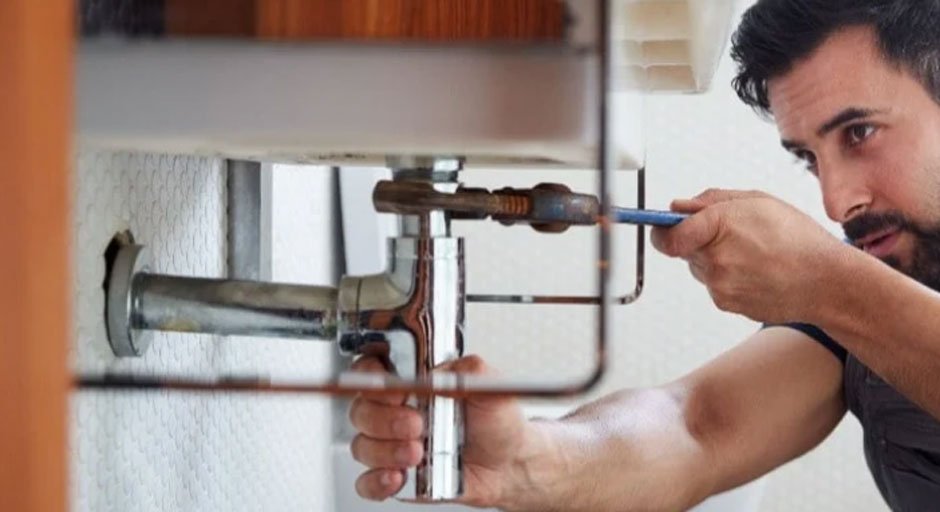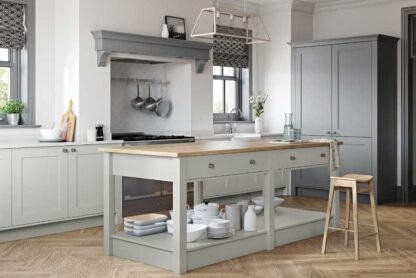There’s something incredibly satisfying about tackling home improvement projects on your own, and plumbing work is no exception. The appeal of DIY plumbing projects often stems from the desire to save money, learn new skills, and feel empowered to maintain your home. However, plumbing systems are complex and essential for daily life, so understanding your limits is crucial. Some tasks can be safely handled without calling a professional, but others demand expertise to prevent potential hazards, protect your home, and comply with local regulations. Knowing what you can and can’t do in DIY plumbing helps ensure safety, save costs, and avoid unexpected issues.
Safe DIY Plumbing Projects for Homeowners
For many homeowners, plumbing tasks can be approachable with the right tools, patience, and knowledge. Here are some of the simpler, safer projects to tackle yourself:
Fixing Leaky Faucets
A leaky faucet is one of the most common plumbing annoyances, and it’s usually easy to fix on your own. A dripping faucet wastes water and can lead to higher bills, but a straightforward repair can solve the problem. Here’s a basic breakdown of what you’ll need to do:
- Tools Required: Adjustable wrench, screwdriver, replacement parts like washers or O-rings
- Steps:
- Start by turning off the water supply to avoid any mess.
- Disassemble the faucet to access the internal components.
- Inspect for worn-out washers, O-rings, or cartridges, as these are often the culprits.
- Replace any damaged parts, reassemble the faucet, and turn the water back on to check for leaks.
With minimal effort, you can resolve the leak and save on future utility costs.
Unclogging Drains
Clogged drains can disrupt your daily routine and are often fixable with simple tools rather than harsh chemicals. Here’s a safe, non-chemical approach:
- Tools Required: Plunger, drain snake or auger, and possibly a drain-cleaning brush
- Steps:
- Start with a plunger to loosen minor clogs.
- For tougher blockages, use a drain snake or auger to break up and remove debris.
- Regularly cleaning your drains with a brush or flushing with hot water can help prevent buildup.
These methods keep your pipes safe from damage caused by abrasive chemical cleaners, ensuring your system runs smoothly without harm.
Installing a New Showerhead or Faucet
Swapping out a showerhead or faucet can significantly update your bathroom’s look and function. Thankfully, this is a DIY-friendly project:
- Tools Required: Adjustable wrench, plumber’s tape
- Steps:
- Remove the old showerhead or faucet by loosening it with a wrench.
- Apply plumber’s tape to the threads of the new fixture to ensure a watertight seal.
- Twist on the new showerhead or faucet, tightening it securely.
With just a few minutes and basic tools, you can refresh your bathroom’s appearance and functionality without professional help.
Toilet Repairs
Toilets can be intimidating, but there are several minor repairs that you can confidently handle:
- Fixes Include: Replacing flappers, adjusting float arms, and unclogging
- Steps:
- If your toilet runs constantly, try replacing the flapper—an inexpensive part that often causes leaks.
- Adjusting the float arm or filling mechanism can help improve flushing efficiency.
- For clogs, a plunger or a toilet auger is usually all you need.
These fixes are simple and inexpensive, making them ideal DIY plumbing tasks that don’t require calling a plumber.
Projects to Avoid (and Why)
Some plumbing projects are best left to the professionals due to the risk of severe damage, safety hazards, and compliance issues. Here are a few DIY projects that are generally unsafe for homeowners to tackle:
Major Pipe Replacement
Replacing pipes involves more than just swapping out old plumbing; it requires detailed knowledge of your home’s layout, water pressure, and pipe materials. Any mistakes could lead to leaks, flooding, or damage to walls and floors. In addition, handling old pipes may expose you to hazardous materials like lead or asbestos.
Water Heater Installation or Repair
Water heater installation or repair involves both electrical and gas connections, posing a risk of electrocution or gas leaks if handled improperly. Improper installation can also result in carbon monoxide poisoning or water damage. Working with these high-stakes appliances requires expert knowledge, making it a task best reserved for a licensed plumber.
Sewer Line Repairs
Sewer line repairs are not only risky for your health due to exposure to sewage but also often require specific permits and expertise. Incorrect repairs can lead to contaminated water supplies, public health risks, and costly fines. These lines are typically managed by professionals with the necessary training and permits to handle hazardous waste.
Plumbing Re-piping
Re-piping a home is a complex task that involves understanding structural considerations and adhering to local building codes. Improper re-piping can lead to long-term issues such as pipe bursts, leaks, and water pressure problems. A licensed plumber will ensure your re-piping project complies with regulations and avoids costly mistakes.
Risks of Attempting Advanced Plumbing Work
Attempting complex plumbing jobs without experience can lead to a range of issues, some of which may cost significantly more than hiring a professional upfront. Here are a few risks to consider:
- Water Damage: Improper repairs or installations can lead to leaks that damage floors, walls, and personal belongings.
- Safety Risks: Working with gas and electricity poses the danger of electrocution, gas leaks, and even fires.
- Legal Concerns: Some plumbing tasks require licensed work to be valid under homeowner insurance policies. Without licensed work, you risk voiding your insurance and facing legal challenges if something goes wrong.
When to Call a Professional
While DIY can be a great option for basic repairs, there are signs that you need a professional’s touch:
- Recurring Leaks: If leaks keep coming back despite DIY attempts, a professional can diagnose the root issue.
- Low Water Pressure: Chronic low water pressure can indicate hidden pipe issues that need a plumber’s expertise.
- Frequent Clogs: Ongoing clogs, particularly in multiple drains, can signal a problem in the main sewer line.
Professional plumbers bring expertise, tools, and experience, ensuring compliance with local codes and a higher quality of work. In the long run, this saves you from potential headaches and additional costs.
Cost Comparison: DIY vs. Hiring a Professional
When considering a DIY plumbing project, compare the costs of tools and materials against the fees of hiring a plumber. For basic DIY projects like fixing faucets or unclogging drains, the initial investment is often low, and you save on labor costs. However, if DIY attempts fail, repair costs can quickly add up.
- DIY Costs: A toolkit for minor repairs may cost around $50-$100, and replacement parts for simple fixtures are generally affordable.
- Professional Costs: Hiring a plumber can range from $150 to $400 per job, depending on the complexity.
While DIY may save money initially, the risk of expensive mistakes often makes professional work worth the investment for more complex tasks.
Taking on DIY plumbing projects can be rewarding and cost-effective for minor repairs like fixing leaky faucets, unclogging drains, and installing new fixtures. However, it’s essential to recognize when a job is beyond DIY’s safe limits. Complex tasks such as major pipe replacements, water heater repairs, and sewer line issues should always be left to the professionals to ensure safety, compliance, and long-term stability. Balancing cost savings, safety, and the value of professional expertise allows you to enjoy the benefits of DIY home improvement without the risks.









